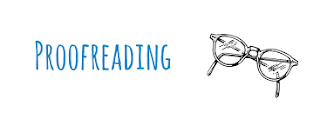One of the easiest and most direct ways to improve the quality of proofreading in your documents is to work with a professional proofreader. Professional proofreading services are complex to perform, and to undertake the task of a proofreader or editor effectively, years of training and experience are needed.
If you are not looking for professional proofreading but would still like to benefit from high-quality, consistent, and readable written documents, this article presents ten tips and tricks that will help. For example, if you want to proofread your own work to avoid the cost of professional proofreading services, you can strive to apply some of these tips when you next proofread your documents.
The ten key tips are as follows:
1. Learn about your common mistakes and errors. If you know what errors you are likely to make, you can approach the process of proofreading your work much more effectively and efficiently.
2. Check over your work when you are most alert. This is a commonly overlooked tip, but it is a cornerstone of success in the detail-oriented task of proofreading.
3. Take a break before proofreading. If you have only just finished writing your manuscript, leave some time before you begin proofreading. The task takes time, and so if you approach it in a rush or without focus, you risk producing a low-quality outcome.
4. Ask someone for a critique of your writing. When you use a professional proofreading service, or when you ask a knowledgeable and trustworthy friend to review your writing, you can receive valuable feedback about your writing (e.g., errors, wordiness, or low clarity) to improve your proofreading.
5. Check your work at least twice. Many authors make the mistake of proofreading their work only once. This is often a fatal error because in the process of proofreading a text and making changes to it, there is a good chance that human error will introduce a new error.
6. Use a spellchecker. Spellcheckers
like Grammarly and Microsoft Word’s built-in spellchecker are invaluable. The
final check for any document should include an automated spellcheck.
7. Don’t be hesitant to ask for help. If you are unsure about anything in your manuscript – such as whether to use a comma in one sentence or an apostrophe in another – remember to do a Google search, look it up in a style guide or book, or consult with a professional proofreader.
8. Start from the end. If you proofread your work back to front – that is, by starting from the last sentence and reading backward, one sentence at a time – you will be able to focus much better on the language rather than the content of your paper or the stream of the argument.
9. Address all errors of one
type in a single pass. Consider proofreading in multiple passes. In one
pass, look for spelling errors; in another, look for incorrect double spaces in
a manuscript; and in yet another, look for a different type of error. This will
increase your speed and accuracy.
10. Proofread on paper. You may find that printing out your document and reviewing it on a piece of paper is less straining for your eyes, allowing you to proofread more effectively.


No comments:
Post a Comment